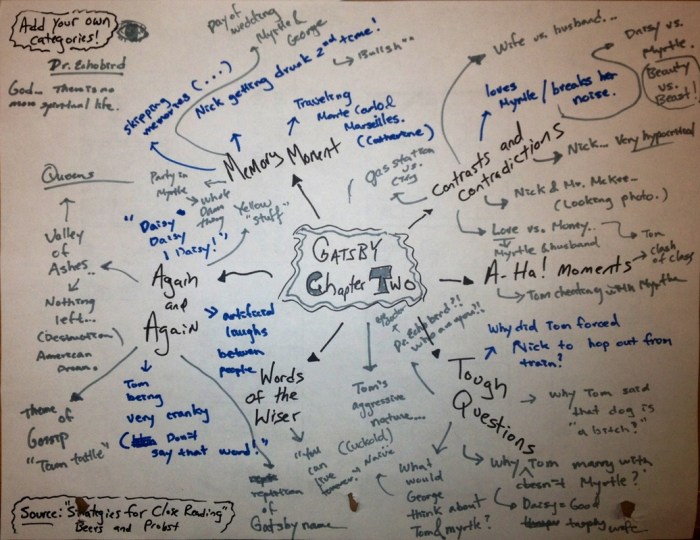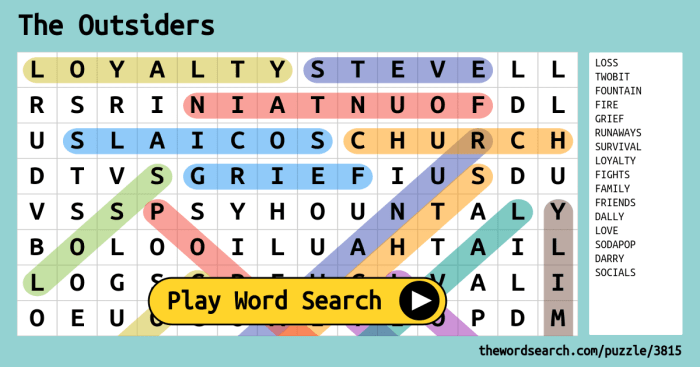The Great Gatsby Final Exam invites you on an enthralling journey into F. Scott Fitzgerald’s literary masterpiece. This comprehensive exam delves into the novel’s intricate tapestry of characters, themes, and literary techniques, offering a profound understanding of this timeless American classic.
As you embark on this literary adventure, you’ll unravel the protagonist’s transformative journey, dissect the motivations of supporting characters, and uncover the profound symbolism embedded within their relationships.
Character Analysis
The characters in “The Great Gatsby” undergo complex journeys and grapple with multifaceted motivations. Their interactions and relationships serve as a microcosm of the Roaring Twenties, exploring themes of love, wealth, and the American Dream.
Jay Gatsby
Jay Gatsby is the enigmatic protagonist, a self-made millionaire who throws lavish parties in an attempt to win back his lost love, Daisy Buchanan. Gatsby’s journey is one of transformation and disillusionment as he confronts the unattainability of his dream.
Daisy Buchanan
Daisy Buchanan is Gatsby’s love interest, a wealthy and beautiful woman who represents the unattainable American Dream. Her character explores the complexities of love, loyalty, and the pursuit of happiness.
Tom Buchanan
Tom Buchanan is Daisy’s husband, a wealthy and arrogant man who embodies the old money establishment. His relationship with Daisy reveals the clash between wealth and social status.
Nick Carraway
Nick Carraway is the narrator of the novel, a young man who moves to West Egg and becomes entangled in the lives of Gatsby and the Buchanans. His perspective provides an insider’s view into the glamour and tragedy of the Roaring Twenties.
Symbolism and Significance of Character Relationships
The relationships between the characters in “The Great Gatsby” are rich in symbolism and significance. Gatsby’s pursuit of Daisy represents the unattainability of the American Dream, while Tom and Daisy’s marriage symbolizes the superficiality of wealth and social status. Nick’s role as the narrator highlights the complexities of perspective and the fallibility of memory.
Themes and Motifs

The Great Gatsby is a novel that explores a multitude of themes, delving into the complexities of human nature and the American Dream. These themes are intricately woven together through the use of recurring motifs, which serve to reinforce and illuminate the central ideas of the novel.
The American Dream
- The pursuit of the American Dream is a central theme in the novel, embodied by Gatsby’s relentless quest for wealth and social status.
- The novel critiques the illusion of the American Dream, revealing the emptiness and disillusionment that often accompany its attainment.
Love and Loss
- The novel explores the complexities of love and loss, particularly through the tragic romance between Gatsby and Daisy.
- The characters’ inability to overcome societal barriers and personal flaws leads to a profound sense of longing and regret.
Time and Memory, The great gatsby final exam
- Time and memory play a crucial role in the novel, as characters grapple with the past and its impact on the present.
- The novel’s non-linear structure reflects the fragmented and subjective nature of memory, highlighting the unreliability of the past as a guide to the future.
The Green Light
- The green light at the end of Daisy’s dock serves as a powerful motif that symbolizes Gatsby’s unattainable dream and the elusive nature of hope.
- The light’s shifting meaning throughout the novel reflects Gatsby’s changing perceptions of his past and future.
The Valley of Ashes
- The Valley of Ashes is a desolate wasteland that represents the moral and economic decay of the American Dream.
- The characters who live in the Valley are trapped in a cycle of poverty and despair, highlighting the novel’s critique of social inequality.
Setting and Atmosphere
The Great Gatsby unfolds in the opulent world of the Roaring Twenties, primarily on Long Island’s Gold Coast. This setting serves as a backdrop to the characters’ extravagant lifestyles and their pursuit of the American Dream.
The novel’s atmosphere is characterized by a sense of nostalgia, longing, and disillusionment. The grandeur and glamour of the Jazz Age contrast sharply with the characters’ inner turmoil and the ultimate futility of their aspirations.
The Roaring Twenties
- The novel captures the exuberance and materialism of the post-World War I era.
- The characters indulge in lavish parties, flaunt their wealth, and embrace the hedonistic spirit of the time.
- However, beneath the surface, there is a sense of disillusionment and emptiness.
Literary Devices
- Symbolism: The green light at the end of Daisy’s dock represents Gatsby’s unattainable dream.
- Imagery: The vivid descriptions of the Valley of Ashes convey the bleakness and despair of the working class.
- Foreshadowing: The recurring motif of eyes (e.g., Daisy’s “soft brown eyes”) foreshadows the characters’ hidden desires and secrets.
Symbolism and Imagery

In “The Great Gatsby,” symbolism and imagery play a vital role in developing characters, themes, and the overall atmosphere. Fitzgerald employs specific objects, colors, and actions to convey deeper meanings and evoke emotional responses from readers.
Objects and Colors
- The Green Light: Represents Gatsby’s elusive dream of reuniting with Daisy. Its green color symbolizes hope and longing.
- The Valley of Ashes: Symbolizes the desolate and morally corrupt industrial world, contrasting with the glamorous world of the Roaring Twenties.
- The Yellow Car: Represents Gatsby’s reckless and ultimately tragic behavior, leading to his death.
Actions and Gestures
- Gatsby’s Reaching Out: His repeated gestures of reaching out to Daisy symbolize his desperate desire for connection and love.
- Nick’s Observation: Nick’s role as an observer and narrator highlights the contrast between the characters’ actions and their true intentions.
- The Absence of Gatsby’s Father: Represents the lack of a solid foundation and the superficial nature of Gatsby’s wealth.
Literary Techniques
The Great Gatsby is a novel that is renowned for its exquisite prose and masterful use of literary techniques. These techniques enhance the storytelling, immersing readers in the novel’s world and amplifying the impact of its themes and characters.
Point of View
The novel is narrated from the perspective of Nick Carraway, a young man from the Midwest who moves to Long Island in the summer of 1922. Nick’s limited point of view shapes the reader’s understanding of events, as he can only report what he sees and hears.
This creates a sense of intimacy and immediacy, drawing readers into the story as if they were experiencing it alongside Nick.
Just finished my Great Gatsby final exam. I’m glad that’s over. Now, I can finally get back to working on my Lo Shu Magic Square project in C++. I found this really cool resource here that has helped me a lot.
Hopefully, I can finish the project soon so I can move on to other things. Back to The Great Gatsby, I think I did pretty well on the exam. I’m just glad it’s over.
Foreshadowing
Fitzgerald skillfully employs foreshadowing throughout the novel to create a sense of suspense and inevitability. Subtle hints and allusions foreshadow major events, such as Gatsby’s tragic death and the disintegration of his dream. For example, the green light at the end of Daisy’s dock, which symbolizes Gatsby’s unattainable hope, is introduced early in the novel and reappears throughout the story, reminding readers of Gatsby’s doomed pursuit.
Historical and Social Context
F. Scott Fitzgerald’s The Great Gatsby, written in the 1920s, mirrors the transformative era of post-World War I America. This period, known as the Roaring Twenties, was characterized by economic prosperity, social change, and a loosening of moral standards.
The American Dream
The novel critiques the American Dream, highlighting the gap between the idealized pursuit of wealth and happiness and the harsh realities faced by many.
- Gatsby’s relentless pursuit of Daisy Buchanan embodies the unattainable nature of the American Dream for those outside the established elite.
- The novel portrays the corrupting influence of wealth and materialism, as characters like Tom and Daisy prioritize their status over genuine connections.
Social Class and Inequality
The Great Gatsbyreflects the rigid social hierarchy of the 1920s, where wealth and lineage determined one’s status.
- The East Egg and West Egg communities represent the divide between the old money elite and the newly wealthy.
- Characters like Myrtle Wilson and George Wilson are marginalized and treated with disdain by the upper classes.
Relevance to Contemporary Society
The Great Gatsbyremains relevant today as it explores enduring themes of wealth, class, and the pursuit of happiness.
- The novel’s critique of materialism and the American Dream resonates with modern audiences facing similar challenges.
- Its portrayal of social inequality and the struggles of marginalized individuals remains timely in a world grappling with issues of economic disparity.
Common Queries: The Great Gatsby Final Exam
What is the primary focus of The Great Gatsby Final Exam?
The exam focuses on a comprehensive analysis of the novel’s characters, themes, setting, symbolism, and literary techniques.
What aspects of the characters will be examined?
The exam will explore the protagonist’s journey, the motivations of supporting characters, and the significance of specific character relationships.
How will the exam assess the novel’s themes?
The exam will identify central themes and discuss how motifs contribute to their development, providing specific examples from the text.
